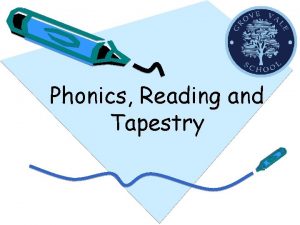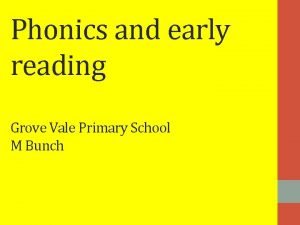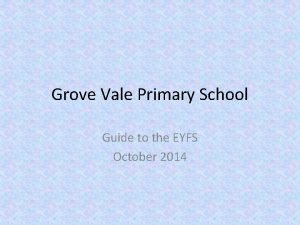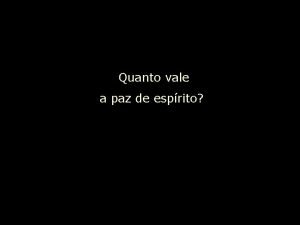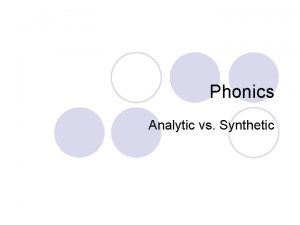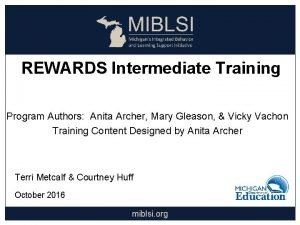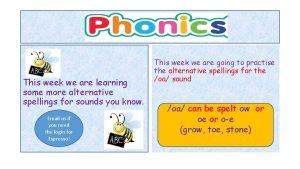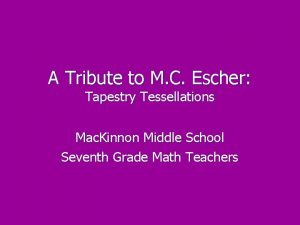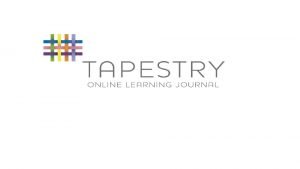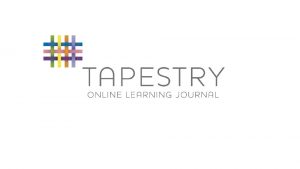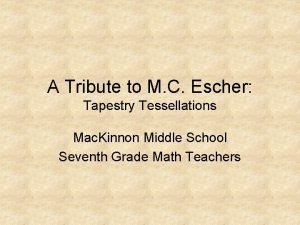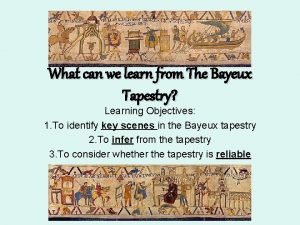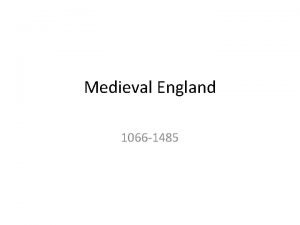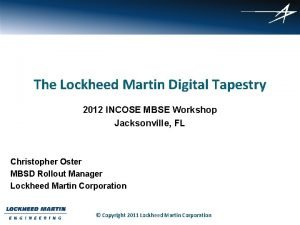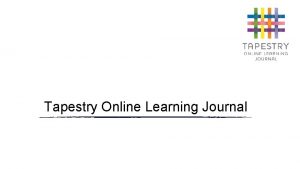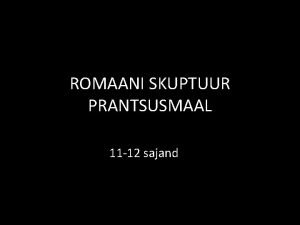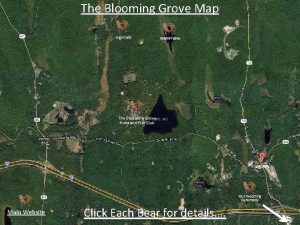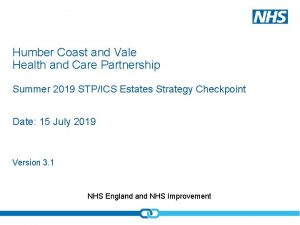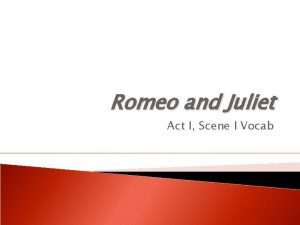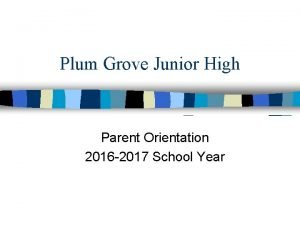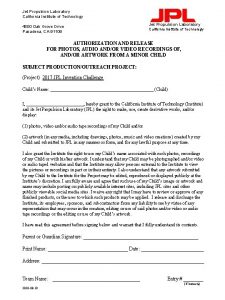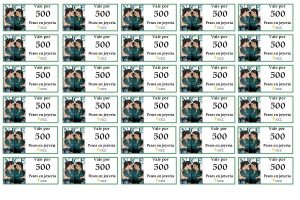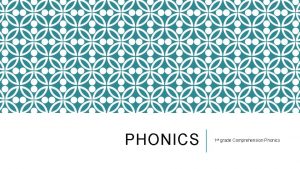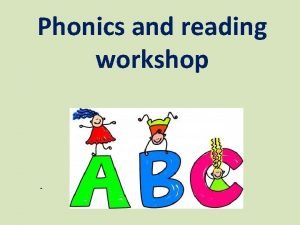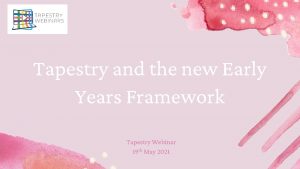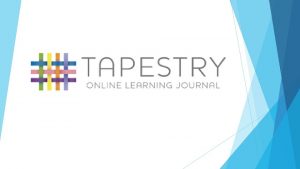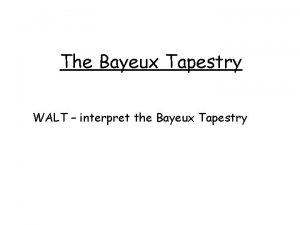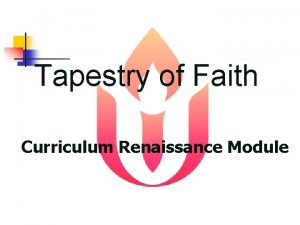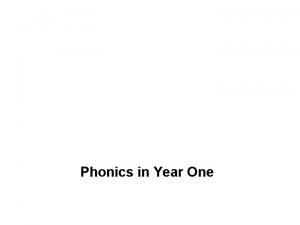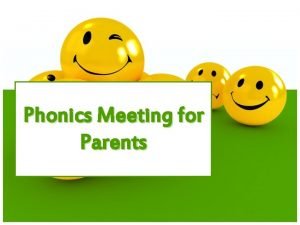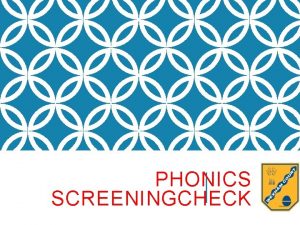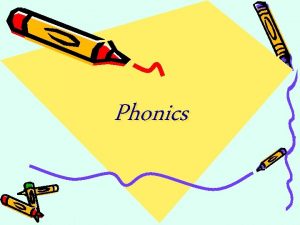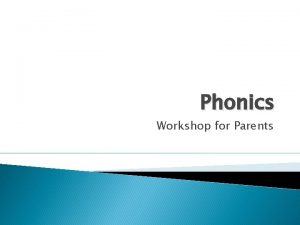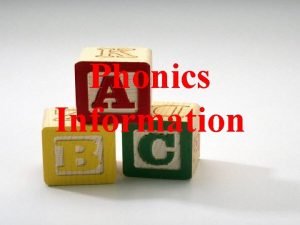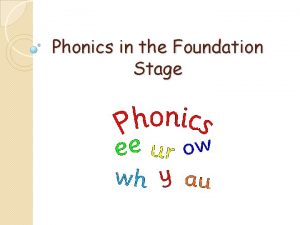Phonics Reading and Tapestry Phonics At Grove Vale
































- Slides: 32

Phonics, Reading and Tapestry

Phonics • At Grove Vale we teach phonics as the primary approach to learning to read and write. • We have our own phonics scheme of work which links closely with the government phonic resource called Letters and Sounds. https: //www. gov. uk/government/publications/lettersand-sounds • The teaching is broken into different phases and in reception we focus closely on phases 2 -4. • Phase 2: involves the teaching of 19 initial sounds and will involve children being able to read some VC words eg as, on, it and CVC words such as cat, dog, bin, as well as the tricky words I, no, go, to , the

• Phase 3 involves the teaching of the next 25 sounds, mostly comprising of 2 letters eg sh, ch • Phase 4 involves consolidating children’s knowledge of graphemes (the sound written down), revising what they already know

All children in reception have a daily 20 minute phonics session Children are taught to: • Recognise the sounds that each individual letter makes eg s a p • Identify the sounds that different combinations of letters make eg sh ch qu • Blend these sounds together from left to right to make a word eg s a p = sap • Children can use these skills to decode new words they see or hear.

Ways for you to help • Each week your child is sent home the sounds they have learnt to read and write that week so that they can practice at home. • They will also be sent home some common words to practice. • Your child will also be sent tricky words that can’t be sounded out to learn by sight.

• It is important that you use the letter sounds with the children rather than the names • We teach pure sounds to help children to decode. This may be different to how you were taught! https: //www. phonicbooks. co. uk/2011/03 /13/how-to-say-the-sounds-of-lettersin-synthetic-phonics/ • We teach children the correct letter formation for each sound learnt • As soon as children know some sounds we teach them to read and write words.

Ideas to help your child to learn the sounds and to read the words Using the computer Ict games and Phonicsplay are 2 websites we use in school that have lots of games • http: //www. ictgames. com/sound. Bingo. html (sound bingo) • http: //ictgames. com/high. Freq/index. html (high frequency word bingo – there is a choice of using no tricky and tricky words) • http: //www. ictgames. com/blending. Bingo_LS. html (letters and sounds bingo • https: //www. phonicsplay. co. uk/Phase 2 Menu. htm Buried treasure, Picnic on Pluto, Pick a picture

• Match the sound and the word. Can you find another word with this sound? Play as a memory game. Spread out the sounds and words – can you find the matching pairs? • Play Snap with letter sounds • Find objects around the house that start with the sound your child is learning. Play I Spy. • Look for letters in the environment. What sounds can children recognise when are they out? • Ask chn to write a sound (or word). Check it is spelt correctly, then challenge them to write it as many times as they can in 15 seconds. Can they beat you? • Use magnetic letters on the fridge. How many words can you make?

Reading in school • • • Daily stories Looking for ‘clues’ in pictures Fact files and non fiction books Rhyming activities Guided reading Individual reading

Reading at Home • • Share stories Encourage children to join in Learn rhymes Use books for information – about hobbies, facts about things they are interested in, recipes, craft ideas • Imagine and make up stories • Join the library • Reread stories. Children like to rehear the same stories. BOOKS DEEPEN THINKING AND DEVELOP STORY LANGUAGE

Reading for understanding • Talking about pictures and stories – looking for ‘clues’ What is happening? What do you think will happen next? • Who is the main character? • What do they look like? (beautiful, furry, black hair…) • What do they seem like? (nasty, kind, brave…) • What does that tell us about? • Where could we find out…? • Talk about the vocabulary and use it at different times

Print in the environment • Look at print in shops, on the street, on food packets and on journeys • Go on a print hunt • Talk about words, letters and numbers you see • I spy in the supermarket – can you find… • Learn print has meaning • Look at letters and words all around us • Recognise and read whole words – stop, no…

By the end of reception • Children read and understand simple sentences. • They use phonic knowledge to decode regular words and read them aloud accurately. • They also read some common irregular words. • They demonstrate understanding when talking with others about what they have read.

By the end of reception • Children use their phonic knowledge to write words in ways which match their spoken sounds. • They also write some irregular common words. • They write simple sentences which can be read by themselves and others. • Some words are spelt correctly and others are phonetically plausible.

What is Tapestry? Tapestry is an online journal recording all the learning and fun of children's early years education. Let’s now have a look at Tapestry …

This is a quick walk through guide to the browser version. Logging in: we will send you an email to allow you to activate your account. You can just use that link to log in for the first time. However, for future times, or if you were assigned a password, you will need to go to this URL to log in: https: //tapestryjournal. com/. Alternatively you can search for Tapestry through Google. This is what the log in page will look like. For the purposes of this tutorial, I will be A Smith, relative of Dorothy Parker.


We would like you to add observations to Tapestry. These can then be seen by your child's teacher and used to make assessments, or just as a contribution to the journal. In order to add an observation, you first need to click on the blue 'Add Observation' button. This can be found on the home 'Observations' tab.

Once you have clicked on it, you will be taken to the page shown next. Here you will need to pick your child/children from the drop down list, add a title, and then you can add some notes and media. Don't forget to press 'Save' at the end!


Here are some examples of the sorts of things we would like you to send in: Trips – places like the zoo, the library, a museum, the seaside. These are great to send in as it shows your child participating in family life and shows us the other things that they are interested outside school. They can also show things like being able to ride a bike or reading a book. Celebrations - another good opportunity to show your child is at home. You can show your child may look after a new baby or how they celebrate important events of dates.

Learning together – maybe you cook with your child or ask them to help you do jobs around the house or in the garden. You can show you work together to learn something new. Wow moments – when you child does something they have been trying hard to achieve or something that amazes you and things that you are proud of. Your child may show certificates that they have achieved or awards they have been given. It might be something simple like getting ready for bed when they are told to! The list of things that you can send in to us is endless and everything you send will be added to the learning journal. You will be able to download a copy of the journal at the end of the year.

Getting Started on Tapestry

Some examples of what to write and what to include A video and a note explaining what the child is doing K decided to make a video and talk about his Grandad’s 60 th birthday party. He tells us what happened at the party and the things he really enjoyed!!

Several photos showing the activities described and a written description of what the child has done Celebrating Chinese New Year We had a family dinner with my grandparents, Aunty, uncle and cousins. This year is the year of the pig ��. I learnt to say happy new year Chinese which is ‘sun lin fai lok’. I also performed a lion dance with my cousins.

A photo of the child in the library and a short video of her looking at the books and trying to sound out some of the words H enjoyed visiting the library to choose some books and also used the pictures to help read the stories she chose

A photo of the child making the model and the finished model C decided to make a model of a steam train as he visited santa via the severn valley railway. He loved been on the steam train and enjoyed his visit to Santa's grotto. Santa gave him a present and we caught the steam train back home. Caleb enjoyed making this steam train and said his favourite bit was glueing the pieces on the train and painting it.

Do: • Include what your child has done/when it was done • Write down what your child thinks about what has been done • Include a range of activities that your child has done • Make it personal by writing exactly what your child says • Click ‘like’ on the observations sent from school to show that you have seen it • Look at the observations with your child • Send in at least 1 home observation each half term

Don’t: • Make your video more than a minute in length • Send in lots of the same activities • Send a photo without explaining what the activity is

Tapestry Project - My Favourite Book This project is related to the Early Learning Goals - Reading and Being Imaginative : We would like children to choose a favourite book (fiction or nonfiction) – if they don’t have a favourite, help them to choose one We would like your child to tell us why they enjoy that book and what the book is about They could: • Show and talk about the book • Act out the story to show what happens at the beginning, middle and end • Pretend to be one of the characters and show what that character is like • Draw a picture or make a model of one of the characters • Make a video to retell the story or show what facts you have learnt • Make a poster to show facts from a nonfiction book

How parents can help: • Talk to your child about the book. What is the title? Where is the blurb? Which characters do they like? What does that character look like and how do they act? What happens at the beginning, middle and end? Are there any repeated phrases in the book?

Any Questions?
 Grove vale library
Grove vale library Grove vale primary school
Grove vale primary school Grove vale primary school
Grove vale primary school Quanto vale a sua paz
Quanto vale a sua paz Synthetic and analytic
Synthetic and analytic Pre reading while reading and post reading activities
Pre reading while reading and post reading activities Anita archer training
Anita archer training Ash's phonics
Ash's phonics C-1450-1
C-1450-1 M. c. escher tapestry
M. c. escher tapestry Tapestry online learning journal
Tapestry online learning journal Tapestry online learning journal
Tapestry online learning journal Tapestry
Tapestry Tapestry learning journal
Tapestry learning journal What can we learn from the bayeux tapestry
What can we learn from the bayeux tapestry Bayeaux tapestry
Bayeaux tapestry Lockheed martin mbse
Lockheed martin mbse What is tapestry
What is tapestry Bernardus gelduinus
Bernardus gelduinus Beaver lake hunt club
Beaver lake hunt club Humber, coast and vale health and care partnership
Humber, coast and vale health and care partnership Aims and objectives of teaching
Aims and objectives of teaching Types of readers
Types of readers Real definition of extensive reading
Real definition of extensive reading Intensive and extensive reading
Intensive and extensive reading Ineffictive
Ineffictive Heartless hinds
Heartless hinds Qut career counselling
Qut career counselling Plum grove junior high school
Plum grove junior high school 4800 oak grove drive pasadena
4800 oak grove drive pasadena Holly grove middle school
Holly grove middle school Oak grove city high school food court
Oak grove city high school food court Willow grove hoa
Willow grove hoa
